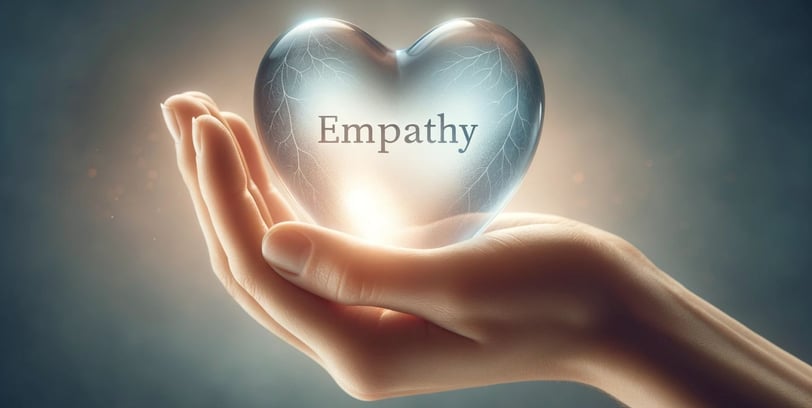Decoding Empathy
Understanding Cognitive Empathy, Emotional Empathy, and Empathic Concern
Justus Zachariah
6/8/20242 min read


Empathy. We hear it all the time – "be more empathetic," "show empathy," "they lack empathy." But what exactly is empathy? It's a complex human quality with different facets.
I want to dive into three key aspects: cognitive empathy, emotional empathy, and empathic concern.
1. Cognitive Empathy: Walking in Another's Shoes (with your Brain)
Imagine yourself trying on a new pair of shoes. Cognitive empathy is like that mental exercise, but instead of shoes, you're trying on someone else's perspective. It's the ability to understand what another person is thinking and feeling from their point of view.
Here's how it works:
Perspective Taking: You actively consider the situation from the other person's viewpoint, taking into account their experiences, beliefs, and values.
Understanding Emotions: You can intellectually grasp the emotions someone might be feeling in a given situation, even if you don't necessarily share those feelings yourself.
Example: Your friend just lost their job. Using cognitive empathy, you recognize they might be feeling scared, frustrated, and uncertain about the future.
2. Emotional Empathy: Feeling What They Feel (But Not Literally)
Emotional empathy is that gut feeling you get when you connect with someone's emotions on a deeper level. It's the ability to share the emotional experience of another person.
Here's the key difference from cognitive empathy:
Emotional Resonance: You don't just understand the emotions intellectually; you actually feel them yourself, to a certain extent.
Example: Seeing your friend cry after losing their job, you might feel a pang of sadness or a surge of protectiveness.
3. Empathic Concern: From Understanding to Action (The "So What?" of Empathy)
Empathic concern goes beyond simply understanding or feeling another person's emotions. It's the desire to help and the motivation to take action to alleviate their suffering.
Here's what sets it apart:
Compassion in Action: It's the "so what?" of empathy. You're not just passively acknowledging someone's pain; you're actively seeking ways to ease it.
Example: Offering your friend a shoulder to cry on, helping them with job search resources, or simply listening and offering support are all ways to demonstrate empathic concern.
The Power of Empathy: Why It All Matters
Understanding these different aspects of empathy can help us build stronger relationships, improve communication, and foster a more compassionate world.
Stronger Relationships: By understanding and responding to others' thoughts and feelings, we build trust and connection.
Improved Communication: Effective communication often hinges on our ability to see things from another's perspective.
A More Compassionate World: By nurturing empathic concern, we're more likely to help others in need and create a more supportive environment for everyone.
Developing Your Empathy Toolkit
The good news: empathy is a skill that can be developed! Here are some tips:
Active Listening: Pay close attention to what others are saying, both verbally and nonverbally.
Ask Open-Ended Questions: Encourage people to share their thoughts and feelings more deeply.
Perspective Taking Exercises: Try to see things from other people's points of view.
Practice Mindfulness: Being present in the moment helps you connect with others on a deeper level.
By honing our cognitive, emotional, and empathic skills, we can become more empathetic individuals, fostering better relationships and building a more connected world.
